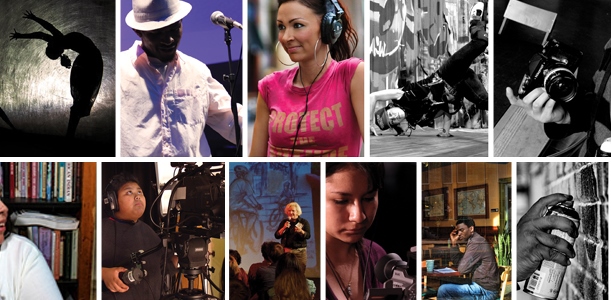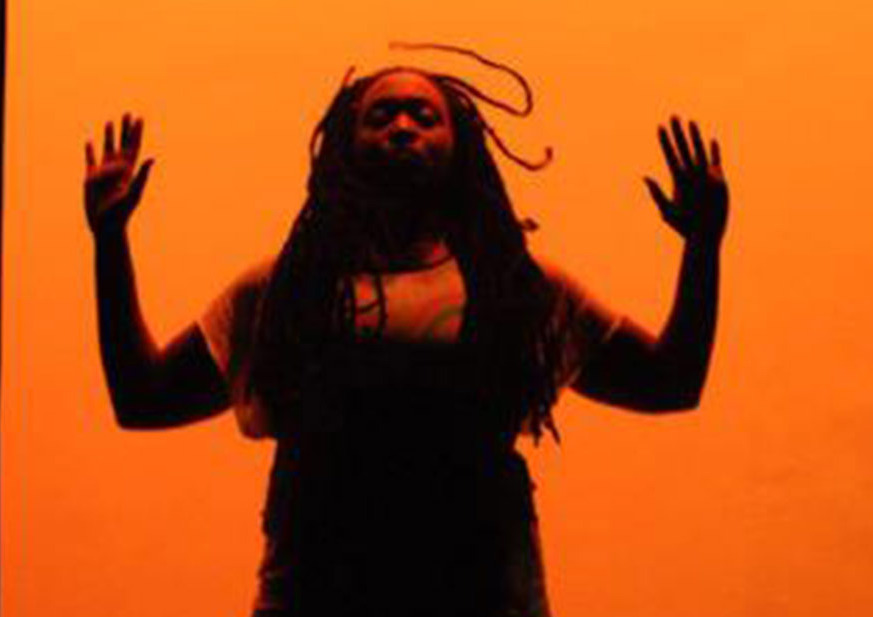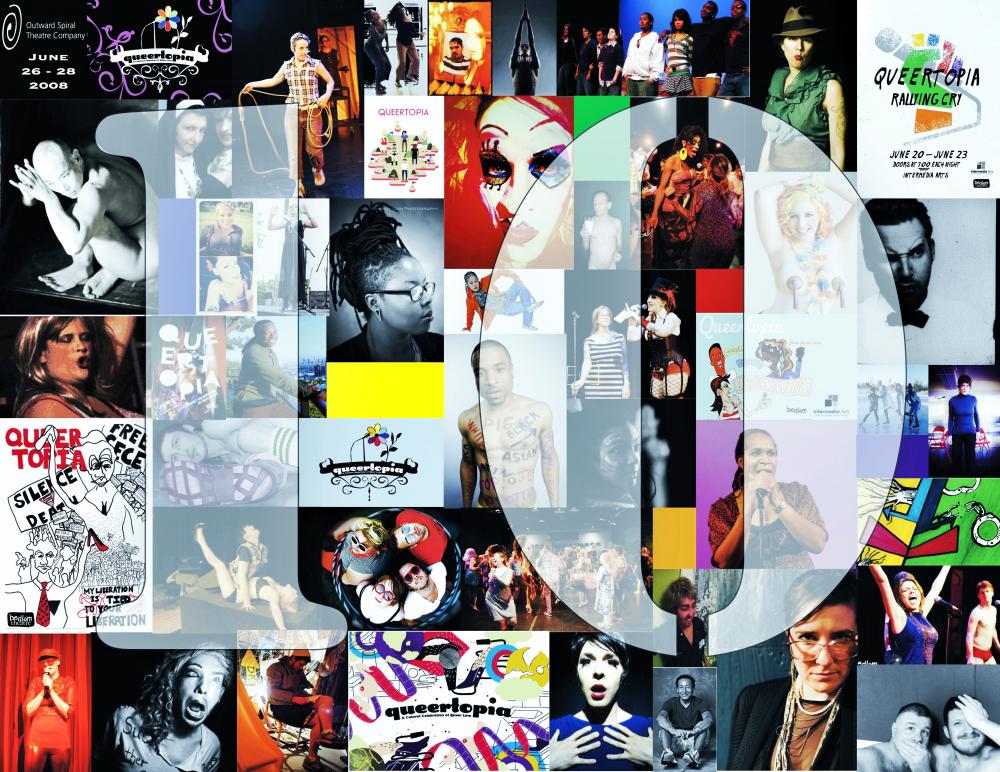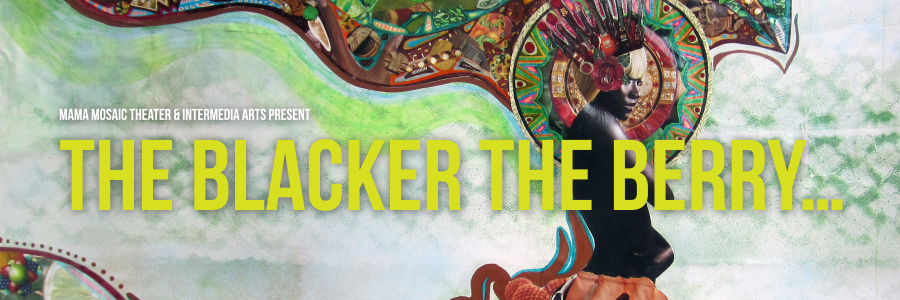Diversity, Equity, and Engagement in the Arts: A Case Study in Change
Intermedia Arts has spent the last year aiming to turn talking points about diversity and community engagement into action. They've changed how they select and program their offerings, who's at the table when organizational decisions are made. It's progress, artists say, but we're not there yet.

Outreach. Inclusion. Engagement. Equity. Diversity. These are all words thrown around a lot in the nonprofit world, but what do they really mean? For arts organizations, in particular, especially arts organizations that aren’t culturally specific, saying you’re going to engage with communities of color isn’t necessarily the same thing as having an equitable relationship with diverse communities. But what about those organizations that are going beyond aspirational talking points and taking meaningful steps, actually changing their operations, so that the infrastructure on which they’re built reflects an intention to be more inclusive?
Last year, Intermedia Arts drew some criticism surrounding their Creative Community Leadership Institute, a training program that develops and connects arts leaders in the local scene. The Institute is expressly intended as a place to foster and encourage innovators working in different communities, but, last year, a number of those selected for the program raised some pointed questions — about the curriculum, about how the program was structured, and about whether participation actually and tangibly benefitted the diverse communities who participated.
“Last year’s Twin Cities cohort raised some important questions,” wrote interim executive director Julie Bates in an email, “which echoed some of what we had already heard from focus groups and through the 10-year impact study still in process.” She says they’re making changes to respond to those concerns. For example, Bates says, in the past each year’s participants and curricular themes were selected and facilitated by the program’s three founding faculty, but this year Intermedia invited Creative Community Leadership alumni to be part of that selection process. A mix of founding faculty, fresh voices, and program alumni are now leading those core efforts.
“For an organization like Intermedia Arts that has been working at the intersection of art and community development for over 40 years,” Bates says, “this is an exciting moment.”
Beyond changes to the Creative Community Leadership institute, since July of last year, Intermedia has also taken part in a 16-month process of discussion and problem-solving supported by the EMC Innovation Lab, one of four organizations nationally which are participating in similar but distinctly targeted working groups.
To that end, in the fall of 2014, Intermedia Arts held a series of three, half-day retreats with a group made up of staff, board, performing artists, and presenting partners; they centered their discussions on the organization’s arts-based civic engagement programming, including Intermedia’s Catalyst series, Queer Voice Reading Series, and the artist-in-residence program. Then, in February, a small number from the Intermedia Arts’ working group headed to a retreat center in Virginia, along with representatives from Pillsbury House and two other nonprofits from different states, to dig into the following questions:
“How do we set the conditions for emerging and established artists and curators in the Twin Cities to be in key decision-making and leadership roles in the future of the organization?”
“How do we ensure equity and inclusion at the core of our artistic curatorial process and financial models?”
Choreographer Maia Maiden, who has worked with Intermedia Arts as a solo artist, took part in that initial working group funded by the Innovation Lab grant last fall. Those early conversations centered around Intermedia’s broader mission and vision, “and how artists interact with that,” she said. Among the topics that staff, board members, artists, and community members discussed were ways artists can have a more active role in the curation process, especially artists “new on the scene,” she said, who don’t have many outlets or contacts.

What Intermedia Arts does well is that it “engages the artists and really wants to see your vision as an artist,” Maiden said. “I really appreciate them in that respect. I don’t have to change who I am.” On the other hand, the organization needs to “be clearer about what structures are in place for payment and giving support avenues for artists,” Maiden continued.
The initiative, aimed at addressing equity in Intermedia Arts’ engagement programs, began at a time when Theresa Sweetland, who now works at the Minnesota Museum of American Art, was Intermedia’s executive director. During her tenure, most of the organization’s curation fell on her shoulders. In the working group’s discussions, Maiden said, they talked about “expanding that process and figuring out how [some of those tasks] could fall on other people.” The question became: When Sweetland leaves, “how can we disseminate and more evenly distribute that information and knowledge she holds?”
According to Julie Bates, while Sweetland’s decision to move on from the organization had nothing to do with the EMC process, the decision to bring on Shá Cage as the guest curator for the 2016 Catalyst series did. In terms of specifically engaging with communities of color, “it’s all about approach, about presenting something they want,” said Maiden. “I bring hip hop, I bring the youth, the elders — the mixture of it all.” Maiden says the programming she presents at Intermedia Arts is dedicated to fostering diversity in audience draw, too. “I want people in the audience to say, I can do that!” Maiden said. But it’s not just about the kind of programming on offer; part of getting those diverse audiences in the door also comes down to access. Put simply, it means that tickets for shows can’t cost an arm and a leg.
One thing Intermedia Arts and other organizations need to work on, she said, is not to lean so heavily on artists, themselves, to generate that broader engagement. “You can’t rely solely on the artists to bring in the communities you need,” she said. “You have to put in that work as an organization, too. Sometimes we get too comfortable.”
In February, Shá Cage was among the artists, staff, and community members who attended the EMC Innovation Lab retreat out of state. “We came up with some really strong prototypes, in terms of making shifts [in programming and structure] that aren’t just surface level,” Cage said. At the retreat, Cage offered some personal feedback: she recalled her first introduction to Intermedia Arts when she was quite young. “I felt like, back then, there was a vibrant energy in the city that was also echoed at Intermedia; spontaneous events were happening, in addition to the [formal] programming that happens regularly,” she said. “I am excited about resurfacing some of those great partnerships and creating a space that can be more flexible once again. There’s always a need for space and programming. How can you, as an organization, make yourself accessible to your community?” she asked.
On that note, as the newly-hired curator for the Catalyst series, Cage looks forward to expanding Intermedia Arts’ outreach strategies. “I think there is still some really good work to be done in terms of creating more access to different members of the community — even just to let them know that this program exists,” she said.

While the Intermedia Arts’ Innovation Lab working group discussions focused specifically on the performing arts, the resulting changes have encompassed all aspects of their organizational structure. “It’s important for every organization to ask: How well do we reflect the communities and artists that we serve in and with?” said Theresa Sweetland. “We need to be interested in collaborative models of decision making. That is, how are we making decisions with [rather than for] the artists we are serving?”
Saymoukda Duangphouxay Vongsay was also part of the initial working group and a participant in the Innovation Lab retreat. “One of our challenges is to make sure that the Catalyst series is equitable and that it makes sense to everybody involved,” she said. “It’s one of those things where one size really doesn’t fit all.”
That “one-size-doesn’t-fit-all” notion comes up often in Intermedia Arts’ rethinking of their contracts with artists, Vongsay said. Right now, for example, there’s a standard contract used for all artists and groups that perform with the Catalyst series. But both the contract itself and the application process, as it stands, might not work as well as it could for emerging individual artists and groups. After discussions at Innovation Lab, Vongsay said, the organization has decided to experiment with the contract Intermedia Arts uses with Catalyst artists presenting at the venue.
At the same time, “we’re not the same thing as a theater company,” Vongsay said. Unlike a place like Mu Performing Arts, where Vongsay has also worked in the past, Intermedia Arts doesn’t produce work. Rather, she says, “we are an organization that has a space available and that is open to artists who do.”
“One of the things i like about Intermedia Arts is that it’s super open to change,” Vongsay said. “I’ve been involved with the organization for 12 years, first as an audience member, then as a volunteer, and now as a board member. One thing I really appreciate is that I have always felt welcome to participate in the decision-making, to help the organization figure out where it could go.”
Actually, a sense of invitation into the process of conception, development, and outreach around programming matters to a lot artists. Ifrah Mansour is an actress, artist and performer whose work has been seen locally at places such as Bedlam, Intermedia Arts, Patrick’s Cabaret, Red Eye Theater and others, in addition to working as a teaching artist through the St. Louis Park school district. As an artist of color, Mansour says she’s amazed, for example, how often she doesn’t get consulted by arts organizations in marketing matters. “When an organization does ask me for consulting, it’s like: ‘Please bring a few audience members [from your community].’ It’s certainly not something I’m compensated for separately.”
Mansour says she is also surprised that in the Twin Cities, which has the largest Somali community in the country, performing arts organizations don’t do more to get East Africans in the door. She argues that efforts to improve access don’t need to be complicated: “When you hire a Somali artist, why not offer comps for East Africans? They are absolutely underserved when it comes to the arts world.” Mansour has gone as far as asking other actors and performers in shows she’s a part of to give her their comps, so she can offer them to people from her community who otherwise wouldn’t attend. “We just need to try a little bit harder to get brown people through the door,” she says. And, too often, we don’t.
At Intermedia Arts, Mansour was an ensemble member in performances of Global Taxi Driver and Blacker the Berry. “It was amazing,” she said of the experience. “I really took advantage of that [invitation to get more deeply involved]. I was only paid for one part, but I inserted myself in a number of different pieces.” For instance, not only did Mansour have a visual arts installation as part of Blacker the Berry, she also performed a duet, took a part in two other artists’ performance pieces, and was a part of a video documentary for the show. In addition, throughout the run, she participated in community tours, on one occasion paying for her own cab fare to make it in time to speak about the project for visitors.

The problem, she says, was that she ended up putting in a lot of time on the project that she didn’t get compensated for. “It broke a little bit of my spirit, but it was really worth it,” she says. “That’s just the reality: All this effort we put in to make a program like this successful, we know we aren’t going to be compensated, but we also know that it’s good for the work.”
Recently, Mansour says she was asked to do another project at Intermedia. And this time, she declined. “I learned my lesson,” she says. “I loved being in Blacker the Berry, but that show financially cost me. …I was like, ‘bless your heart, but I have to say no to this.’”
Mansour suggests that arts organizations could learn from the efforts of St. Louis Park Public Schools; the district hired her to stand outside of the school and directly survey parents about their needs. “Schools are trying to target and properly represent the people they serve. It’s amazing what you can accomplish when you do a little bit of work to add [community] voices directly into the mix. I wish we could do that in the arts world.”